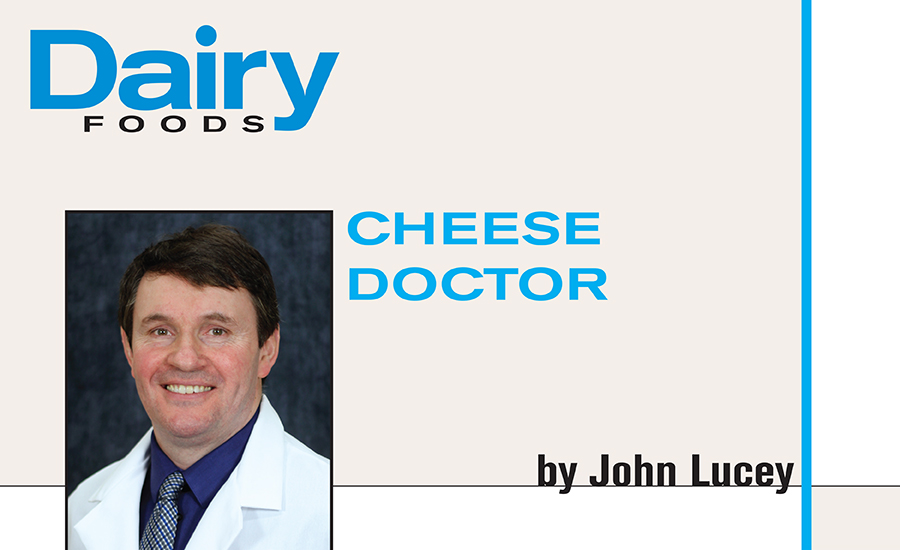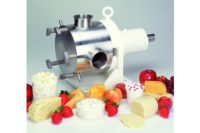Powders and retentates can increase cheese yield

Quality milk is the most important ingredient in cheesemaking. In recent decades, however, various types of dairy ingredients have become popular additions to the cheesemaking process.
Dairy ingredients provide manufacturers with an opportunity to increase yield, thus improving profitability and productivity. Dairy ingredients also help to standardize the protein-to-fat content of the cheese milk and help combat seasonal fluctuations in milk composition. Not all dairy ingredients are equal, however, as the cost, impact on cheese quality and related regulations differ greatly between them.
Nonfat dry milk powder (NFDM) is perhaps the most popular dairy ingredient used to improve cheese yield. NFDM can be used in all cheeses including those with a standard of identity. NFDM contains a high concentration of lactose (about 50% or more), which can lead to acid defects in cheese if used at excessively high levels.
Another potential concern is the possibility that stale off flavors might be present in the powder. Use of NFDM can also lead to undesirable Maillard browning reactions in hard Italian cheeses. It also increases the propensity for calcium lactate crystal development in aged Cheddar cheeses. NFDM has the advantage of being stable so it has a longer shelf-life than fresh (liquid) ingredients. Using powders requires specific mixing equipment, tanks and sufficient time for adequate rehydration. So consider this if you select NFDM as a dairy ingredient.
What about UF or MF retentates?
Another option is membrane filtration retentates (concentrates). Retentates have increased protein contents (and fat contents if derived from whole milk) but do not contain the high level of lactose found in NFDM. Thus, cheese yield is improved since yield is directly proportional to the casein and fat contents.
The lower lactose concentration in cheese milk also helps lessen the likelihood of acid defects being observed in the cheese. Retentates are liquid concentrates and thus do not need to be rehydrated.
There are two main types of membrane retentates, ultrafiltration (UF) and microfiltration (MF). UF essentially increases the concentration of all milk proteins (i.e., both casein and whey protein) and have been used for cheesemaking since the 1970s. MF retentates are newer, but are attracting increased attention mainly because the permeate fraction is an alternative method to produce whey without needing to make cheese.
MF can be used to remove whey proteins prior to cheesemaking while selectively increasing casein protein (the protein that forms the cheese matrix). The whey proteins may have more added value if they are separated from milk prior to cheesemaking rather than from the whey after cheesemaking. Note that this milk-derived whey product is free from rennet, added color, starter culture or developed acid, and it has great sensory attributes.
Whichever option you choose, it is important to note that excessive fortification of cheese milk with dairy ingredients can cause additional problems if the milk protein concentration exceeds 5%. Curd tearing, losses of fat and production of fines are some concerns.
The use of high protein levels in cheese milk is possible but requires careful monitoring of the coagulation process or the use of different cheesemaking equipment. It can also result in cheese that is firmer with less melt and flavor. The use of added dairy ingredients will also increase the value of whey as some of the added ingredients will end up in the whey at higher concentrations than they would in whey from milk that was not fortified. However, the overall financial benefit of using added dairy ingredients will not be seen unless the solids in the whey are recovered.
In the United States, a major obstacle to the greater use of retentates and other modern dairy-derived ingredients is the unclear regulations regarding their use in cheesemaking. The standards of identity for most cheese varieties have not been updated in many decades and thus they do not list retentates as permitted ingredients in many cases.
If a membrane filtration process is done at the same facility as the cheese plant, then these concentration methods can be considered to be a part of the process. (Cheesemaking itself can be viewed as a method to concentrate fat and protein in milk). However, if the membrane filtration process is done at another facility and the concentrated milk is shipped to a cheese plant, then the regulatory officials look at the use of these ingredients more restrictively.
The FDA has “temporarily” allowed the use of UF milks for a few cheese varieties including Cheddar, mozzarella styles, Swiss (they requested labeling of the ingredient) and in a few specific cases cottage cheese. Internationally, this is less of an issue as the Codex General Standard for Cheese (Codex Standard 283-1978) lists raw materials for cheese as “milk and/or products obtained from milk.”
Looking for a reprint of this article?
From high-res PDFs to custom plaques, order your copy today!








